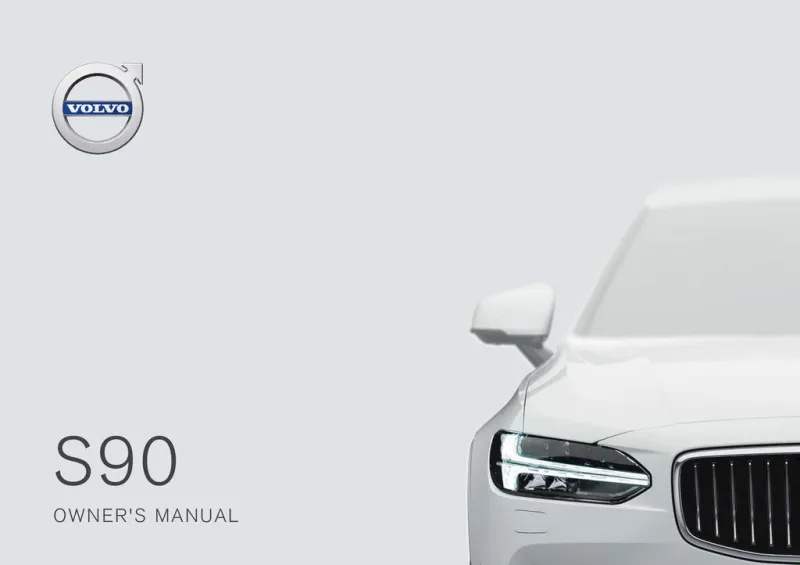2018 Volvo S90 Owner's Manual

Table of Contents
2018 Volvo S90 Overview
Introduction
The 2018 Volvo S90 is a stunning luxury sedan that blends Scandinavian design philosophy with cutting-edge technology and superior performance. With an elegant exterior and a meticulously crafted interior, the S90 represents the pinnacle of Volvo's commitment to safety and refinement. Delving into the details, this sedan offers a perfect fusion of comfort, style, and advanced features tailored for discerning drivers seeking a premium driving experience.
Powertrains
Under the hood, the 2018 Volvo S90 offers a range of robust powertrains designed to deliver an optimal balance of performance and efficiency. The base T5 model comes equipped with a turbocharged 2.0-liter four-cylinder engine, producing 250 horsepower and 258 lb-ft of torque, paired with an eight-speed automatic transmission. The T6 variant amps up the performance with a supercharged and turbocharged engine that outputs 316 horsepower and 295 lb-ft of torque. For those seeking the ultimate in efficiency without sacrificing power, the T8 plug-in hybrid variant combines the T6’s performance with an electric motor for a total of 400 horsepower, plus an impressive electric-only range.
Trims
The 2018 Volvo S90 is offered in three main trims: Momentum, R-Design, and Inscription. The Momentum trim features a variety of standard luxuries, including leather upholstery, power-adjustable front seats, and a premium sound system. The R-Design adds a sporty flair with unique styling cues and sportier seating, while the Inscription trim elevates luxury with additional premium materials, upgraded audio, and advanced comfort features. Each trim allows drivers the flexibility to choose according to their preferences.
Features
Volvo prioritizes safety and technology in the S90, embedding a range of high-tech features. Standard features include Volvo's Sensus infotainment system, a 9-inch touchscreen interface, Bluetooth connectivity, adaptive cruise control, and a suite of advanced safety features like lane-keeping assist, blind-spot monitoring, and automatic emergency braking. Optional features include a panoramic sunroof, a head-up display, and a top-of-the-line Bowers & Wilkins audio system, ensuring a lavish experience.
Owner's Manual
The owner's manual for the 2018 Volvo S90 serves as a comprehensive resource for new owners, guiding them through the vehicle's features, maintenance requirements, and safety protocols. It offers essential information on operating the car's advanced technologies, troubleshooting common issues, and ensuring the best care for the vehicle. The manual ensures that owners fully leverage the capabilities of their S90 while maintaining its performance and reliability for years to come.
User manual download
The Volvo S90 owner manual for the 2018 model year is to be found in PDF downloadable format on this page. The owner manual for the model year 2018 is free and in English, but the repair manuals are usually not easy to get and may cost more.
Manual Questions
Fill the form below and someone will help you!
